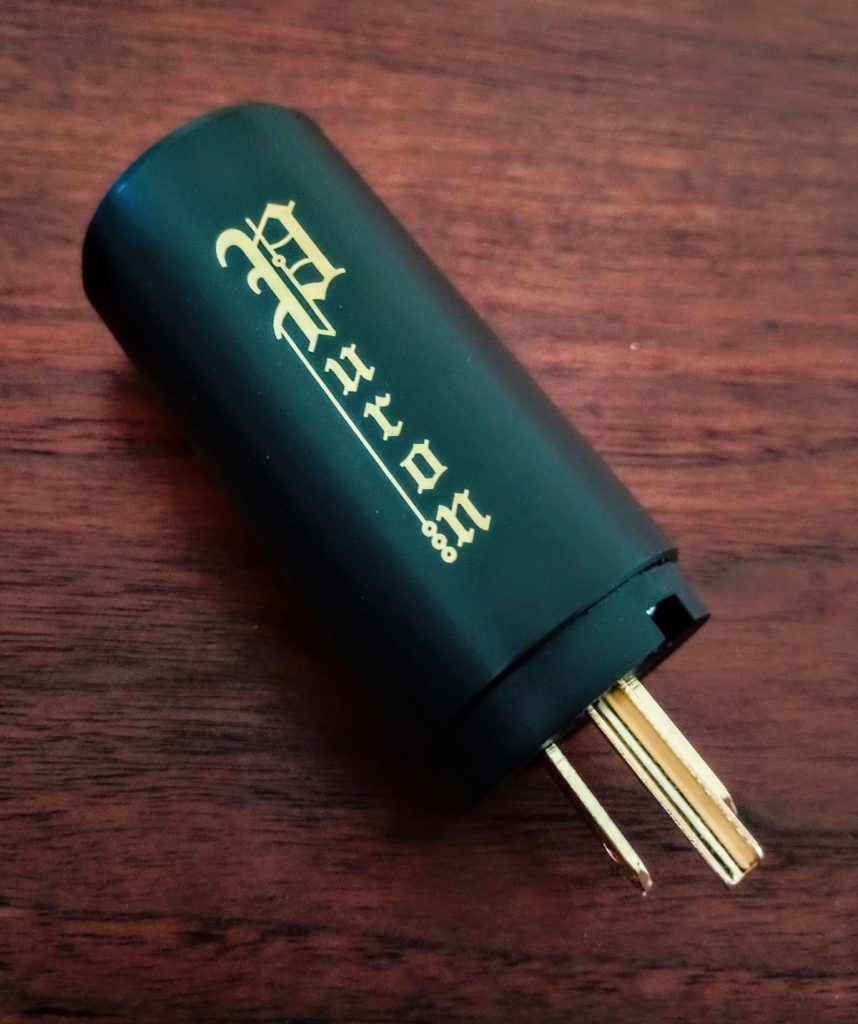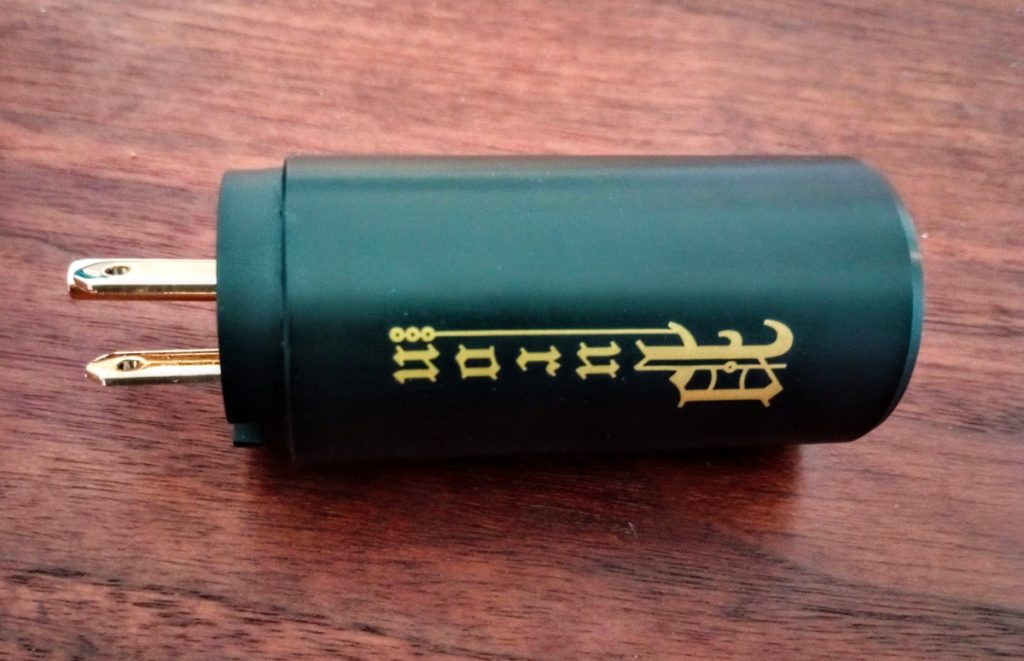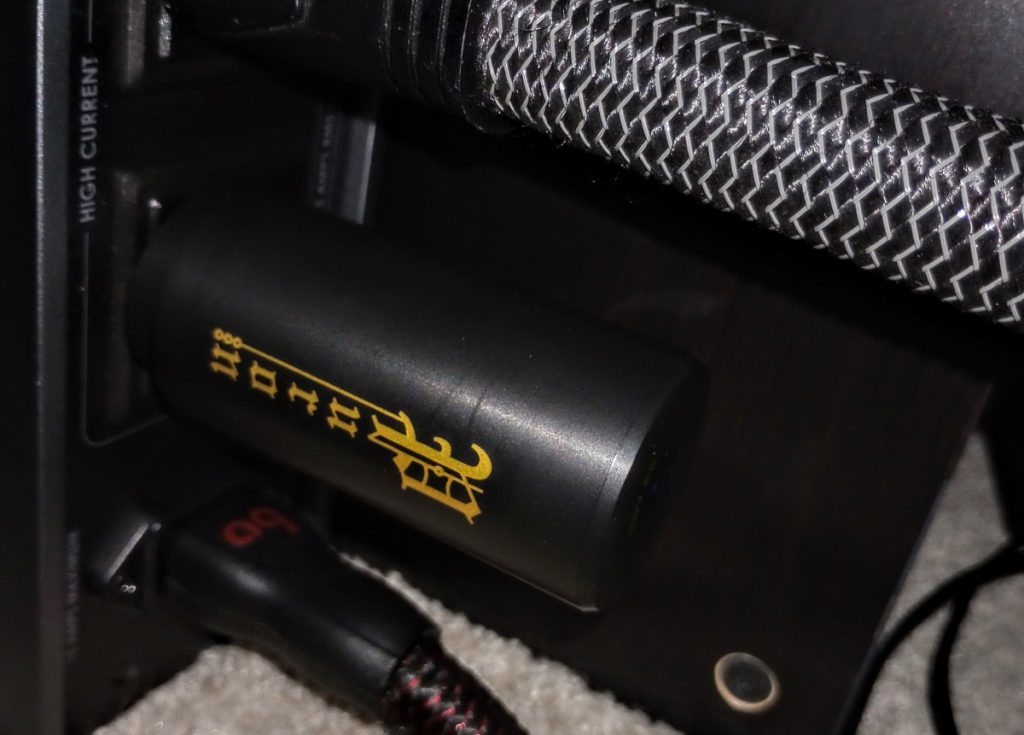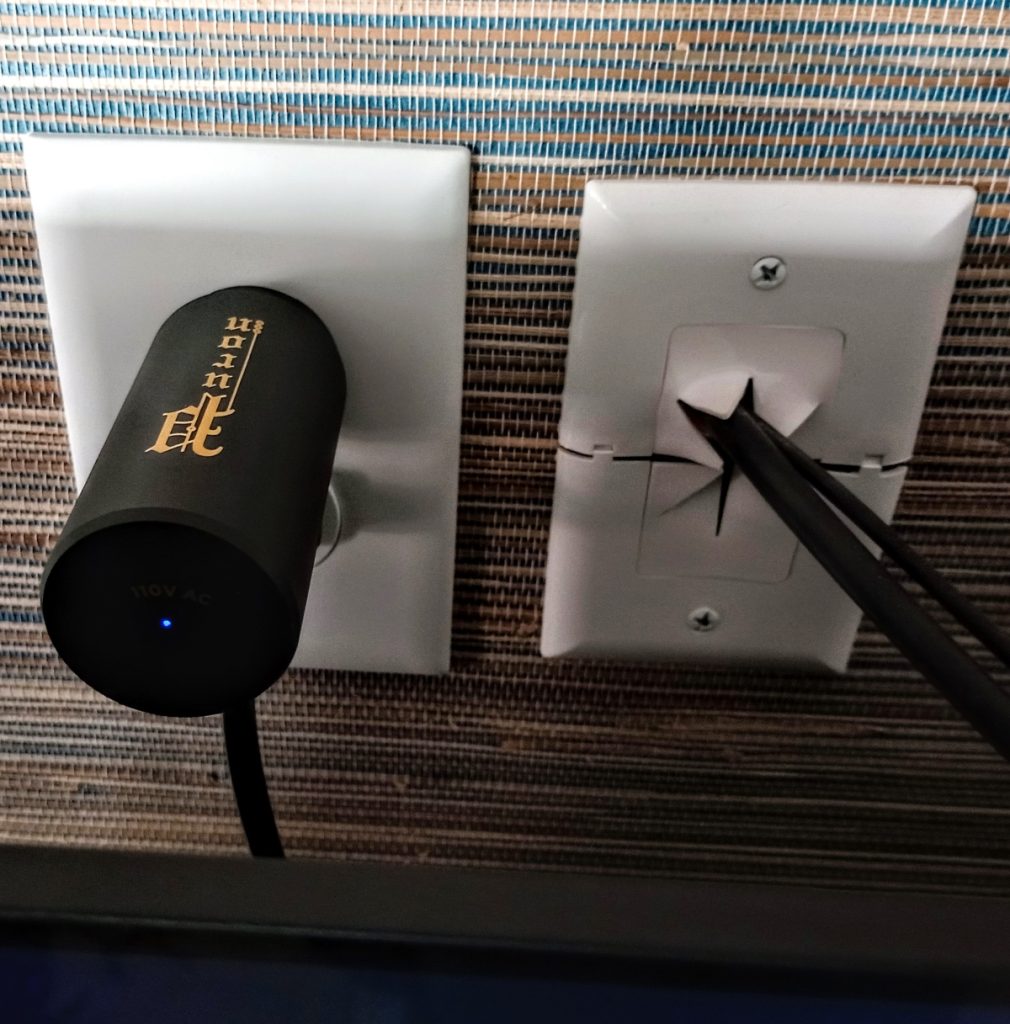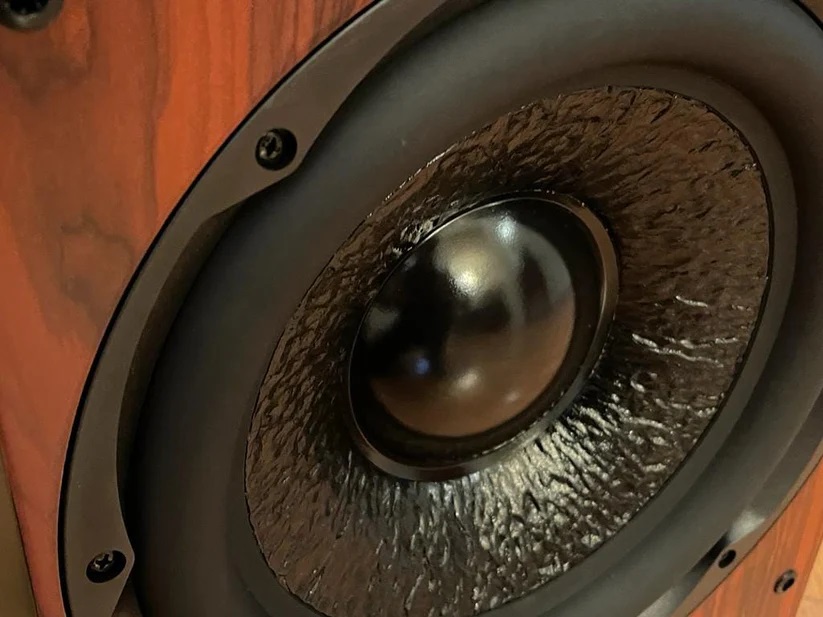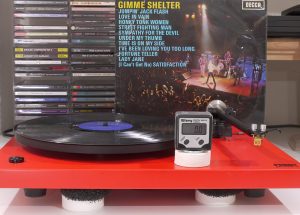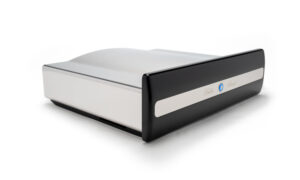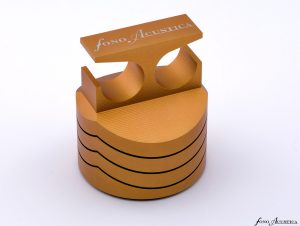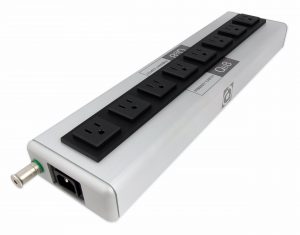There are two recent observations I've made in high-end audio: 1) There are plenty of relatively inexpensive devices that can add significantly to your enjoyment of music and video playback, even if those devices might appear to be incapable of making a difference. Also, 2) The number of "audio enthusiasts" who dismiss the perceived benefits of such devices out-of-hand is exponentially proportionate to the number of us who have actually experienced them in our systems. Let me translate that second statement: for every one person who has actually experimented with and listened to a particular device, there are probably ten with zero experience, who will loudly scoff at any reported benefits. Mainly because science tells them—and should tell us—that any such level of improvement isn't possible. Period.
I've upgraded the AC power going to my two systems significantly over a period of several years; at my previous home in Georgia, my audio room was custom-built to a certain point, and had dedicated AC lines for my audio equipment. And the dimensions of the room were based on the Cardas Golden ratio, as closely as I was allowed by the builder. I'd intended to take the custom build even further, but cost overruns on other aspects of construction prevented that. Regardless, I got most of what I wanted in the best-sounding dedicated audio room of any home I've ever occupied. But even with everything I did in an attempt to improve the quality of the AC power to my equipment stack, I still noticed that I could still hear a significant level of audible grunge when I'd raise the system volume to reference levels. I found that quite disturbing.
That excessive level of AC grunge was mostly tamed by the addition of a pair of AudioQuest Niagara units, a Niagara 1200 and a Niagara 3000. AudioQuest eschews the use of the term "power conditioner," preferring to call the Niagara units Low-Z Power/Noise Dissipation Systems. The addition of upgraded AC power cables was also an important step in the correct direction; that was further enhanced by the addition of a pair of ADD-Powr EAU4 ElectraClear AC Harmonic Resonators. Which work by an additive—rather than the typical subtractive—process; they add "harmonic resonance" to the AC circuit the equipment is connected to. It's what I call "blue sky" technology, but its effectiveness in clarifying the AC power signals is undeniable. You'd think with all that going on in my system, nothing else could offer any level of additional improvement.
But at my new location here in South Carolina, I no longer had the luxury of dedicated AC lines or rooms custom-built to fulfill specific design goals. But at least, I did still have all the updated AC equipment to provide clean power to my systems. In spite of all that, I still felt there was a definite need for improvement.
Mark Schifter of Vera-Fi Audio Must be Some Kind of Audio Savant!
It seems like every time I'm thinking about some segment of my system that could be improved upon, Mark Schifter of Vera-Fi Audio is right around the corner with the exact gadget I need! I received an email from Mark in mid-December offering me the opportunity to evaluate a pair of Puron AC Power Conditioners that are distributed worldwide by HiFi House UK (Puron devices were previously distributed by Vera-Fi Audio). Mark told me that the Puron units—even in combination with other power conditioning equipment—would still deliver noticeable improvements to audio and video systems. Based on my previous experience with anything Mark had any involvement in, of course, I told him I was all in!
I had the pleasure of evaluating Vera-Fi Audio's Vera-Link Bluetooth wireless streaming amplifiers late last year, which offered a ratio of performance-to-price that was unlike anything I've ever seen—or heard! The performance of the Vera-Link amplifiers seemed impossible to believe at their unbelievably low price point; you can read my full review HERE. I've also just reviewed Vera-Fi's Vanguard Caldera subwoofer, which produces controlled, musically deep bass that rivals subwoofers costing many multiples of its very low price; you can read that evaluation HERE. Those reviews will give you a glimpse of the kind of technological marvels that Mark Schifter and Vera-Fi Audio are making available to the audiophile world. My positive impressions of Vera-Fi's products made Mark's recommendation of the Puron AC Power Conditioners a complete no-brainer for me.
Dave Clark, Managing Editor of Positive Feedback, has expressed to me his deep respect for the products Mark Schifter manufactures and represents, and especially his recommendation for the Puron AC Power Conditioners. In 2022, he and Carol Clark gave them one of Positive Feedback's Brutus Awards for high-end audio products that really make a difference. You can read his assessment of their effectiveness HERE.
The Puron AC Power Conditioners Arrive
The dual Puron ACs arrived soon after I received Mark's email; their appearance was exactly as I had expected. The Puron units feature satin black cylindrical hard plastic bodies with gold-plated, grounded three-prong AC plugs (for the North American market—schuko connectors for European and other worldwide markets are also available). You can also upgrade to Furutech connectors (if you so desire) for an upcharge from the base MSRP of $250 (USD). Each unit measures four and a quarter inches from top to plug tip with a diameter of an inch and a half. An inserted Puron unit extends three and three-eighth inches from the electrical outlet's surface. The Puron logo is emblazoned in gold lettering across the body of the device, and there's a tiny blue LED that glows to show that the device is active. I chose not to crack one open and have a look inside, but their weight is substantial for such a small device.
Mark advised me that the Puron units take about 24-hours to achieve the full effect once plugged into the AC outlet. Each of my two principal systems has an AudioQuest NRG Edison AC outlet to provide power to the AQ Niagara units and to the entire system in each respective room. One of the two NRG Edison receptacles has the power cable for the Niagara unit inserted, and the second has one of the ADD-Powr ElectraClear units inserted. Mark recommended placing the Puron unit in the first receptacle of each Niagara unit ahead of everything else connected to it—but he also recommended playing about with various locations to determine the maximum effect. Multiple units will definitely increase the effect, should individual circumstances require them.
Setup and Listening Results
You can click on my name in the header above and see the full complement of equipment in each of my two systems. At my previous location in Georgia, prior to the addition of all the new power conditioning equipment and upgraded AC power cords, I could turn the volume up with no signal present and hear a serious level of grunge and AC hash. After the insertion of the Niagara equipment—nothing, not a whisper. I incorrectly assumed that the same would be true at my new location in South Carolina, and had not really taken a listen to the AC noise spectrum at full volume since getting set up here almost a year ago. While some might say that this doesn't really prove anything, I do believe it sets a valuable baseline for how well the AC power conditioning equipment is doing its job.
I first cranked the system volume in my larger, digital system room, and was surprised to hear a low level of hash still present in the AC line. Unlike at the old location, where the dedicated lines had nothing on them except the audio equipment, I don't have that luxury here, so everything—including LED lighting and other not-so-niceties—are present on the circuit that provides power to the two rooms where my systems reside. For comparison, I also checked the volume on my all-analog room; there's a new PS Audio Stellar phono preamplifier now in service that has two turntables connected to it. Anyone who still listens to LPs knows that phono cartridges and the preamplifiers that boost their signals—especially the microscopically low signals of moving coil cartridges—are particularly prone to noise of all sorts. Prior to the arrival of the new PS Audio unit, I was running two separate phono preamps, and had been experiencing RF noise problems along with cable routing noise problems. The new, single phono preamp solved many of those issues, but with the volume setting of my PrimaLuna EVO 300 tube integrated amp cranked beyond normal listening levels, there was a surprising level of AC hash still present in the line. I inserted a Puron device into each AQ Niagara unit per Mark's recommendations in each room, and waited a full 24-hours before doing any serious listening.
The results were a shock to my system, especially with audio systems where I really didn't think it could get any better! Cranking the volume absent of any signal in the digital system now yielded absolutely nothing; there was no noise present of any kind. But the greater shock came in how much more musical my digital system had become; there was, of course, a much lower noise floor, with blacker-than-black backgrounds, and that alone allowed me to hear more deeply into the music. With the Puron AC Conditioner I heard a greater degree of clarity, voices and musical instruments were more well defined in the soundstage, and a more precise stereo image was presented by my Magneplanar LRS+ loudspeakers. And the soundstage was presented with an increased scale of image; vocalists and small combo jazz ensembles were now painted across the room with almost larger-than-life realism. Those improvements carried over to the new Vanguard Caldera subwoofer, where the bass was now more dynamic, more musical, and more well-controlled.
Surprisingly, a greater degree of improvement was shown in the all-analog room; where with the Puron device in place, the system achieved a significantly increased level of quiet. Removing the Puron unit displayed a previously undetected level of hash that had been present in the background, and was gone following reinsertion of the device—the moving coil input was now significantly quieter than before. As in the digital room, the music emerged from a blacker background; LPs that were already quiet became even more deathly so, and the music achieved a greater level of absolute realism. The Puron unit accentuated the already upgraded performance offered by the PS Audio phono preamplifier; my all-analog system that I've already been over the moon with for weeks has gotten even more refined. And more analog-sounding, if that's even possible! And my KLH Model Five loudspeakers suddenly seemed more musical, with more tightly controlled bass, and they projected an uber-realistic stereo image.
I don't have a high-end AV setup, but I do have a very nice, 4K resolution TCL 65-inch flat screen television; I connected one of the still-warmed up Puron units to the available receptacle of the wall outlet the TCL display is plugged into. And then played the 4K version of director Denis Villeneuve's superb reimagining of the movie Dune; removing and reinserting the Puron unit revealed a significant uptick in the clarity of the 4K image presented by the TCL display. I already feel like the TCL unit is capable of presenting images that are almost 3D-like, but with the Puron device inserted, it literally achieved new levels of sharpness, realism, and improved color rendering.
Final Thoughts
Once again, I was shocked by the inexpensive Puron AC Power Conditioners, that not only accomplished their stated goals, but easily exceeded them. Thanks again, Mark, for your recommendation! There's very little information on the web regarding the manufacturer, but the Puron AC Power Conditioners perform at a level far beyond what the $250 (USD) cost would suggest. You can reach out to the folks at HiFi House UK for more information via email HERE. The Puron AC units are irreplaceable in my systems, and come very highly recommended!
Puron AC Power Conditioner
Retail: $250 (USD)
Distributed by HiFi House UK
All photos courtesy of the author




